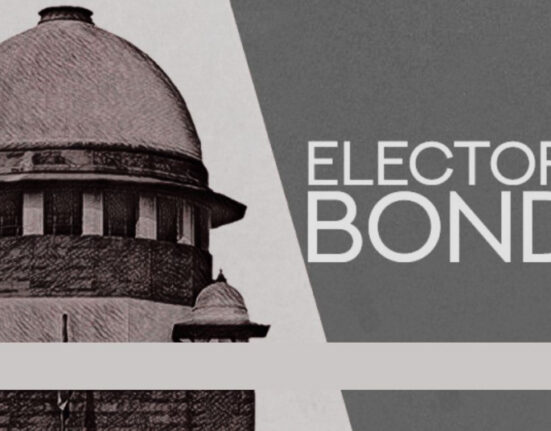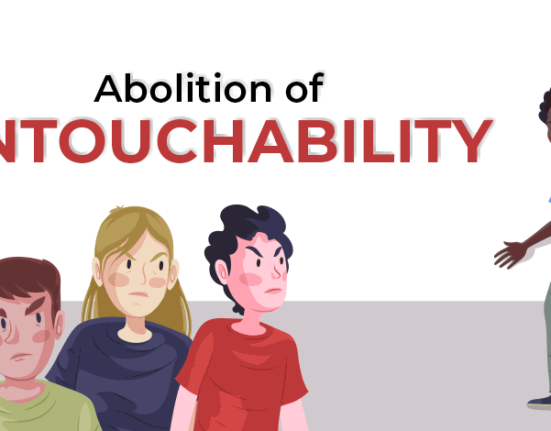Tanu Saini, a 4th Year Law Student at the Institute of Law Kurukshetra University has written this article on “76th Amendment of the Indian Constitution”
“Constitution is not a mere lawyer document, it is a vehicle of life and its spirit is always the spirit of the age.” – B.R. Ambedkar
INTRODUCTION
Indian Constitution is proudly the bulkiest constitution in the world. It is the Supreme Law of India. Our Constitution has accepted the ideals of equality and Justice both in the Social and Political filed. Accordingly, it abolishes any discrimination against any class of person on the ground of religion, race, and place of birth.
Our Constitution has accepted the ideals of equality and justice both in the social and political fields. Accordingly, it abolishes any discrimination against any class of persons on the ground of religion, race, or place of birth.
“It would have been a blunder on the part of the makers of our Constitution if, on a logical application of the above principle”, They had omitted to make any special provisions for the advancement of those who are socially and economically backward, for the democratic march of a nation would be impossible if those who are disabled are not aided at the start.
The principle of democratic equality, indeed, can work only if the nation as a whole is brought on the same level as far as that is practicable. Our Constitution, therefore, provides certain temporary measures to help the backward sections to come up to the same level as the rest of the nation. Moreover, certain permanent safeguards for the protection of the cultural, linguistic, and similar rights of any section of the community who might be said to constitute a ‘minority’ from the numerical, not communal point of view in order to prevent the democratic machine from being used as an engine of oppression by the numerical majority.[1]
Article 16
It guarantees equality of opportunity in matters of public employment. It prohibits discrimination in respect of public employment on grounds only of religion, race, caste, etc. But the State can make reservations of appointments or posts in favor of any backward class of citizens not adequately represented in the service under the State. Tamil Naidu has long struggled for equal educational opportunities and Government jobs dating back to the pre-independence period. Reservation was especially believed by the oppressed classes as a successful mechanism for affirmative action against discrimination. It all began with the Justice Party Government of Raja of Panagal, which introduced Caste Reservation in 1921. Since then the reservation policy had been in operation in Tamil Nadu.
The Constitutional (Seventy Sixth Amendment) Act,1994 is the formal name of the 76th Amendment of the Indian Constitution. This amendment allows the continuation of the 69% reservation in Tamil Nadu by adding the relevant Tamil Nadu Act to the Constitution’s 9th Schedule.
HISTORY OF RESERVATION IN TAMIL NADU
From 1920 – 1979
In 1927
Due to the efforts of Periyar E.V. Ramasamy, the Communal government order was brought into effect by the Chief Minister of the Madras Presidency. The reservation gave 44% to non-brahmin Hindus, 8% to scheduled castes, and 16% to Brahmin, Christians, and Muslims. Although these numbers did not accurately represent their population share, Periyar pointed to it as a ‘compromise’ and accepted it.
In 1950,
The reservation was removed because it was considered unconstitutional by the Madras High Court. Further, it was upheld by the Supreme Court.
From 1951,
The backward classes were given a 255 allocation.
In 1970,
The first backward classes commission of Tamil Nadu was appointed. It was led by A.N.Sattanathan and assigned by M. Karunanidhi. It alleged in its report that a higher class inside that backward class termed the “Creamy Layer” had been exploiting huge advantages of reservation. Also that it prevents the growth of the actual Backward Classes (BC). The Commission proposed that a separate group of “Most backward classes” (MBC) be created, as well as an expansion in quotas to aid everyone. The Commission further proposed, a separate quota of 16% for the MBC and 17% for the BC. The overall reservation rate in Tamil Nadu was 41%.
In 1971,
The Dravida Munnetra Kazhagam (DMK) government increased reservations for BC from 25% to 31%. Furthermore, the reservation for Scheduled Castes (SC) and Scheduled Tribes (ST)was increased from 16% to 18%. Karunanidhi established a separate Ministry for the Welfare of the backward classes during the DMK’s rule from 1971 to 1976. It was the first such in the whole of the country. Thus, The state’s total reservations stood at 49 percent.
The All India Anna Dravida Munnetra Kazhagam, headed by M.G. Ramachandran, decided to implement the creamy layer principle based on the recommendations of the Sattanathan Commission in 1979. In 1979, Ramachandran set up economic criteria of Rs. 9,000 annual income limit for reservation eligibility. There was strong political opposition against this policy.
1980 – 1989
In 1980,
The AIADMK under M. G. Ramachandran reversed his decision on economic criteria after the AIADMK faced a close defeat in the 1980 Indian general election in Tamil Nadu. He further raised the quota for Backward Classes from 31 percent to 50 percent making the total reservation 68%. The forward castes filed a lawsuit with the Supreme Court opposing this move. The Supreme Court ordered the government to form a commission to investigate the real state of backward classes in Tamil Nadu.
In 1982,
The Second Backward Classes Commission assigned by the MGR government and headed by J.A. Ambasankar found that about 11 castes, accounting for about 34.8 percent of the backward classes, represent 50.7 percent jobs in public service commission, 62.7 percent seats in professional courses, and 53.4 percent scholarships. The Commission determined that the backward class population was about 67 percent. Furthermore, the Commission requested that 17 forward caste groups be added to the list while 34 caste groups be removed. The government added 29 new caste groups to the list of backward classes. However, it did not exclude any and kept the same 68 percent quota for SCs, STs, and backward classes.
In 1987,
Vanniar Sangam, the Parent Body of Pattali Makkal Katchi, conducted statewide road blockades, vandalized public property, committed arson on Dalit settlements, and fell trees seeking 20% reservations in state government. Moreover, 2 percent reservations in the federal government for the Vanniyar Caste. 21 Vanniyars were killed in Police firing. MG Ramachandran convened a meeting with the community’s leaders. He soon became ill and died without making a decision.
In 1989,
After the Vanniyar protests, the DMK government split the 50 percent BC quota into 30 percent for Other Backward Class (OBC) and 20 percent for MBC. The Vanniyars were qualified for reservation under the MBC quota, along with 106 other caste groups.
76TH AMENDMENT OF THE INDIAN CONSTITUTION
31 August 1994, the 76th amendment of the Indian Constitution came into effect. This amendment was enacted in the Forty-fifth year of the Republic of India. Parliament enacted it. This modification amends Schedule 9 of the Indian Constitution.
Main points:
- The Tamil Nadu Reservation Act of 1994, mandates 69 percent of seats in educational institutions and positions in state services. It was listed in the Ninth Schedule to protect it from judicial review.
- The supreme court declared in 1992 that the overall percentage of reservations should not be higher than 50%.
OBJECTS AND REASONS
The Constitution (Eighty-Fifth Amendment) Bill of 1994, which became the Constitution (Seventy-Sixth Amendment) Act of 1994, had a statement of purposes and justifications attached to it.
Tamil Nadu has been implementing a “policy of reservation” for almost a century. Wherein individuals belonging to the Backward Classes, Scheduled Castes, and Scheduled Tribes are granted certain benefits. Moreover, This policy covers reservation of appointments to posts in the public services and “reservation” of seats in educational institutions. The State Government periodically expands the extent of reservation in accordance with the demands of the vast majority of the populace. Currently, it stands at 69 percent. Scheduled Castes make up 18% of the population, Scheduled Tribes 1%, and Other Backward Classes 50%.
On November 16, 1992, the Supreme Court issued its decision in Indira Sawhney and others v. Union of India and others (AIR 1993 SC 477). Adding that the maximum proportion of reservations under article 16(4) shall not exceed 50%.
A writ petition was submitted to the Madras High Court. This brought up the issue of admission to institutes of higher learning for the academic year 1993–1994.
The High Court of Madras ruled that for that academic year. The Tamil Nadu government could maintain its previous reservation policy. However, the quantum of reservations should be reduced to 50% during the 1994-95 academic year.
To challenge the Madras High Court, the government of Tamil Nadu filed a Special Leave Petition. This was done in order to ensure that the State Government’s current reservation policy is upheld in order to maintain the progress of the Backward Classes. However, the Supreme Court’s interim ruling states that the reservation shall not exceed 50%. But when it comes to the matter of admission to educational institutions.
Role of Tamil Nadu State Government
On November 9th, 1993, the Tamil Nadu Legislative Assembly held a special session. In that, it had been absolutely decided to request the Central Government take immediate action to submit a suitable amendment to the Indian Constitution. However, This was done to enable the Tamil Nadu government to maintain its current 69% reservation policy for enrollment in educational institutions and government services. On November 26, 1993, an all-parties meeting was convened in Tamil Nadu. It was held with the goal of guaranteeing the 69% reservation policy. It would continue in place for the benefit and advancement of the underprivileged.
The Tamil Nadu Backward Classes, Scheduled Castes and Scheduled Tribes (Reservation of Seats in Educational Institutions and of Appointments or Posts in the Services Under the State) Bill, 1993, was adopted by the Tamil Nadu government. This bill was passed to the Indian government for consideration by the Indian President in line with Article 31C of the Indian Constitution.
The Union Home Minister met with the heads of Political Parties on July 13, 1994. This was held to address the contents of the Bill because of the significance and sensitive nature of the situation. The Bill should be ratified, according to the leaders’ general agreement. As a result, on July 19, 1994, the President approved the Bill.
Accordingly, on July 19, 1994, the Tamil Nadu government put in the picture the Tamil Nadu Backward Classes, Schedule Castes, and Scheduled Tribes (Reservation of Seats in Educational Institutions and of Appointment or Posts in the Services Under the State) Act 1993 that it would become Act No. 45 of 1994.
Role of Central Government
On July 22, 1994, the government of Tamil Nadu asked the Indian government to add the aforesaid Tamil Nadu Act 45 of 1994 to the Constitution of India’s Ninth Schedule for the following reasons:
- Article 31C of the Indian Constitution is invoked by the aforementioned Act as it is under the purview of clauses (b) and (c) of article 39, as well as articles 38 and 46 of the Constitution-vide section 2 of the Act.
- Overturned by the Supreme Court.
- The State legislation’s provision has already been backed by the Indian Government as evidenced by the President’s assent to the Tamil Nadu Bill. Consequently, it is imperative that the Tamil Nadu Act 45 of 1994 is included in the Ninth Schedule of the Constitution to ensure its protection under Article 31B, which precludes judicial review.
- The Bill aims to accomplish the aforementioned objective.
IMPORTANT PROVISION
Amendment of the Ninth Schedule- The entry that comes following entry 257 and prior to the explanation in the Constitution’s ninth schedule is as follows:
“257A. The Tamil Nadu Backward Classes, Scheduled Castes and Scheduled Tribes (Reservation of Seats in Educational Institutions and of Appointments or Posts in the Services Under the State) Act, 1993 (Tamil Nadu Act 45 of 1994).”
CONCLUSION
The 76th Amendment of the Indian Constitution went into effect on 31 August 1994. This constitutional amendment modifies Schedule 9 of the Indian Constitution.
It deals with reserving seats in educational institutions and appointments or posts in state-run services for members of backward classes, scheduled castes, and scheduled tribes.
On November 16, 1992, the Supreme Court of India established a ceiling of 50% on the total percentage of reservations permitted under Article 16(4) of the Constitution.
Also Read: What is the 74th Amendment Act And Its Impact on local bodies, Click Here!
[1] Basu, D.D. – Introduction to the Constitution of India, p.327 (6th edition)
![]()







Leave feedback about this